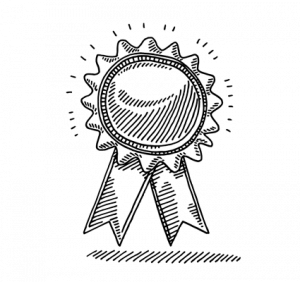Nowadays, Fuzzy Delphi Method (FDM) is broadly used by researchers in the various fields of Science, Technology and Management. This method was stated by Ishikawa et al. (1993) in which it is the integration between the traditional Delphi techniques and fuzzy set theory.
In this article, I am willing to employ FDM to design a strategic plan. At the first, I will explain a brief methodology of Fuzzy Delphi Method then I will depict step by step to make a strategic plan and I will highlight where we need to utilize FDM. Finally, I will bring an example for better perception of FDM.
Methodology
Traditional Delphi method is an approach to gathering information from high qualified experts to develop the predictions about future events. A panel of experts is chosen. Then, they release their opinions for each feature where the responses of experts are collected and analyzed statistically. The processed data will communicate with the experts again to write another response. This procedure will be repeated rounds of questioning and written responses in which the outcome will cover the reasonable data to solve a problem or to forecast an event in the future. This method was developed by the Rand Corporation at Santa Monica, California in the late 1960s. One of the most important problems is to solve the fuzziness of the expert consensus within the group decision making. Murray et al. (1985) first proposed the application of fuzzy theory to the Delphi method. Then Ishikawa et al. (1993) utilized the maximum-minimum method together with cumulative frequency distribution and fuzzy scoring to compile the expert opinions into fuzzy numbers. We can use triangular fuzzy number, trapezoidal fuzzy number and Gaussian fuzzy number as the selection of fuzzy membership functions. There are many Fuzzy Delphi methods such as basic FDM, Fuzzy Analytic Hierarchy Process (FAHP), and the concept of distance (dij) between two triangular numbers refer to Kaufmann and Gupta (1988). In this article, my example is applied the triangular membership functions referred to basic FDM accompanied by the type of alpha ?cut method (Ranking) as threshold. But in the next article, I will bring an example of Distance method and I will compare these two methods. (Why?) I will tell you the reason behind of this comparison in the next article.
Now, let us see a literature review of basic FDM as follows:
Yu-Lung Hsu et al. (2010) stated the steps of basic FDM: [1]
?1. Collect opinions of decision group: Find the evaluation score of each alternate factor?s significance given by each expert by using linguistic variables in questionnaires.
2. Set up triangular fuzzy numbers: Calculate the evaluation value of triangular fuzzy number of each alternate factor given by experts, find out the significance triangular fuzzy number of the alternate factor.
3. Defuzzification: Use simple centre of gravity method to defuzzify the fuzzy weight.
4. Screen evaluation indexes: Finally proper factors can be screened out from numerous factors by setting the threshold.?
I also used from above steps for my example in this article.
Designing Strategic Plan
Here, I follow the steps which should be taken to design a strategic plan simultaneously I highlight the items which need to utilize FDM.
In fact, by designing a strategic plan, we look at the image of the company or industry including current vision and mission then we will make new vision and vision as the outlooks of the company or industry. Let?s go the steps:
1) Overview of the company
2) History of the company
3) Current vision & mission
4) Strategic goals
5) Current strategies
6) External or Internal consideration (Is the company Industry base or Resource base?)
7) Financial performance
8) Financial and Strategic Objectives
4) Strategy - Making Hierarchy including corporate strategy, business strategy, functional area strategies within each business, operating strategies within each business.
5) PEST Analysis (The components of a company?s Microenvironment) including:
5-1) The impact factors of political issues
5-2) Dominant Economic Factors
5 -3) Dominant Socio ? Cultural Factors
5-3) Dominant Technology Factors
We need to use from FDM to rank and to find priorities.
6) Porter?s forces
According to Porter?s forces, we have below forces:
-Power of Suppliers..........
You can review the continuation of this article on below link:
http://emfps.blogspot.com/2012/02/fuzzy-delphi-method-to-design-strategic.html
-bbbf1.jpeg)
-567a7.jpeg)

